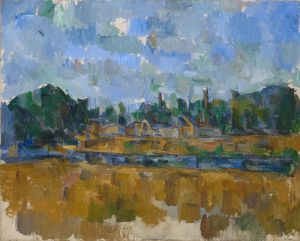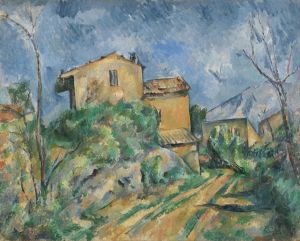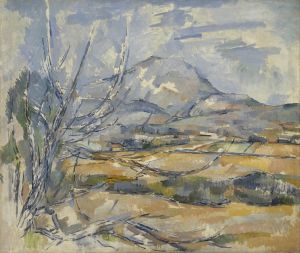
The Plaster Mill
A hand-painted replica of Paul Cézanne’s masterpiece The Plaster Mill, meticulously crafted by professional artists to capture the true essence of the original. Each piece is created with museum-quality canvas and rare mineral pigments, carefully painted by experienced artists with delicate brushstrokes and rich, layered colors to perfectly recreate the texture of the original artwork. Unlike machine-printed reproductions, this hand-painted version brings the painting to life, infused with the artist’s emotions and skill in every stroke. Whether for personal collection or home decoration, it instantly elevates the artistic atmosphere of any space.
Paul Cézanne, a French Post-Impressionist painter, is renowned for his unique approach to form and color, which laid the groundwork for the transition from 19th-century artistic concepts to a radically different world of art in the 20th century. One of his notable works is "The Plaster Mill" (French: "Le Moulin à Plâtre"), which exemplifies his innovative style and technique.
"The Plaster Mill" was painted around 1866, during the early period of Cézanne's career. This painting is part of a series of works that depict industrial and rural scenes, reflecting Cézanne's interest in the changing landscape of his native Provence. The painting captures a plaster mill, a facility where gypsum is ground into plaster, set against the backdrop of the French countryside.
In "The Plaster Mill," Cézanne employs a muted color palette dominated by earthy tones, which is characteristic of his early works. The composition is structured with a strong sense of geometry, a precursor to his later, more abstract explorations of form. The mill itself is rendered with a solidity and weight that contrasts with the more fluid and dynamic treatment of the surrounding landscape.
Cézanne's brushwork in this painting is vigorous and expressive, yet controlled, demonstrating his evolving technique. The texture of the paint and the visible brushstrokes contribute to the overall sense of movement and life within the scene. This approach to painting was innovative at the time and would later influence the development of modern art, particularly Cubism.
"The Plaster Mill" is also significant for its depiction of industrial activity within a natural setting, highlighting the coexistence and tension between human industry and the natural world. This theme is recurrent in Cézanne's work, reflecting his deep engagement with the environment of Provence and his interest in the interplay between man-made structures and the landscape.
Today, "The Plaster Mill" is held in the collection of the Musée d'Orsay in Paris, France. The museum is home to many of Cézanne's works, providing a comprehensive view of his artistic development. This painting is an important piece within Cézanne's oeuvre, illustrating his early experimentation with form and color that would eventually lead to his mature style.
Cézanne's influence on subsequent generations of artists cannot be overstated. His innovative approach to composition, use of color, and exploration of geometric simplification paved the way for the emergence of Cubism and abstract art. "The Plaster Mill" stands as a testament to his early genius and his enduring impact on the art world.
In summary, "The Plaster Mill" by Paul Cézanne is a significant work that captures the essence of his early style and foreshadows his later contributions to modern art. The painting's depiction of an industrial scene within a natural landscape, combined with Cézanne's distinctive brushwork and compositional techniques, makes it a valuable piece for understanding the evolution of his artistic vision.

















